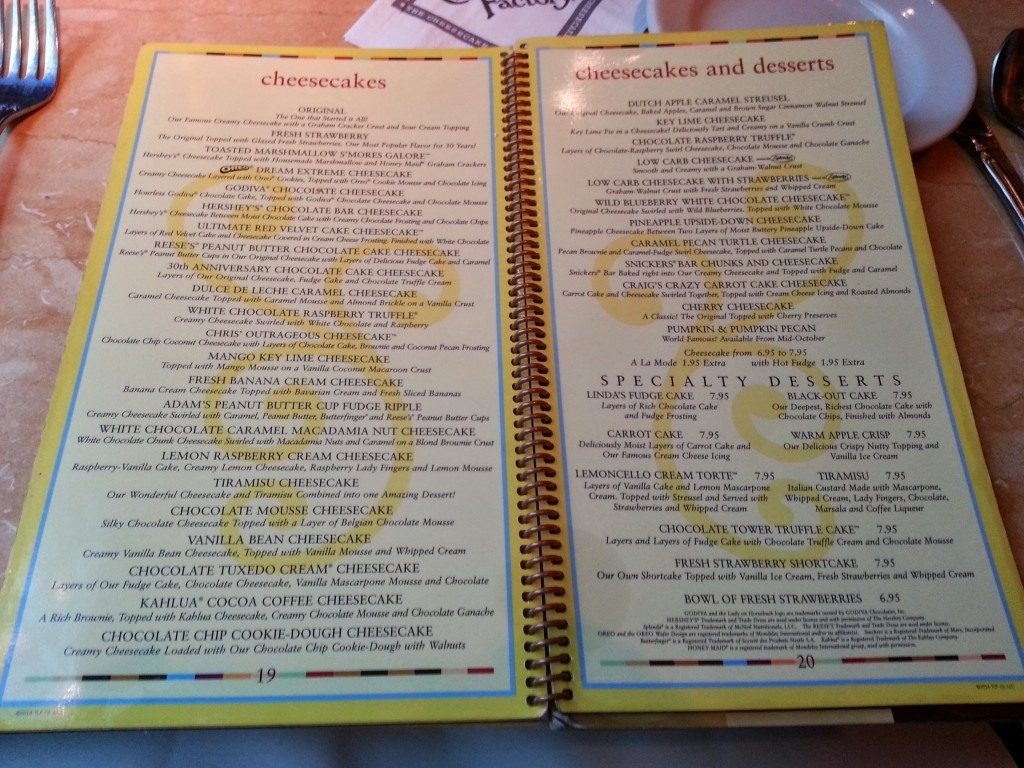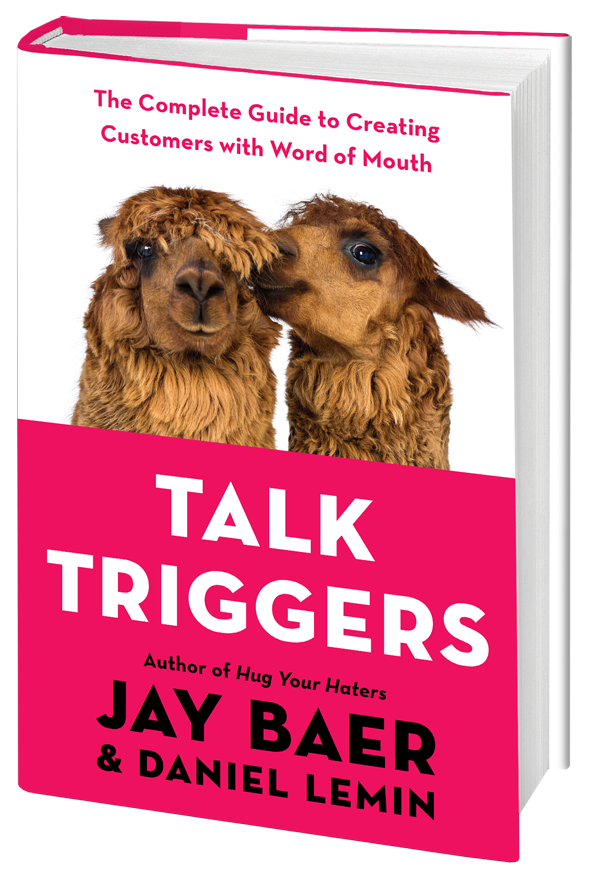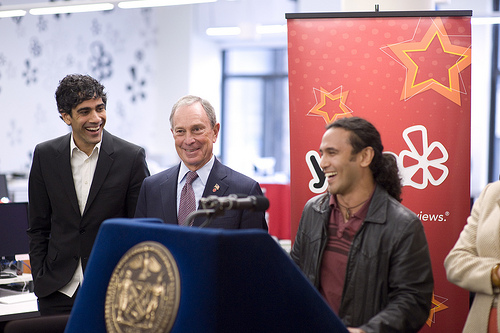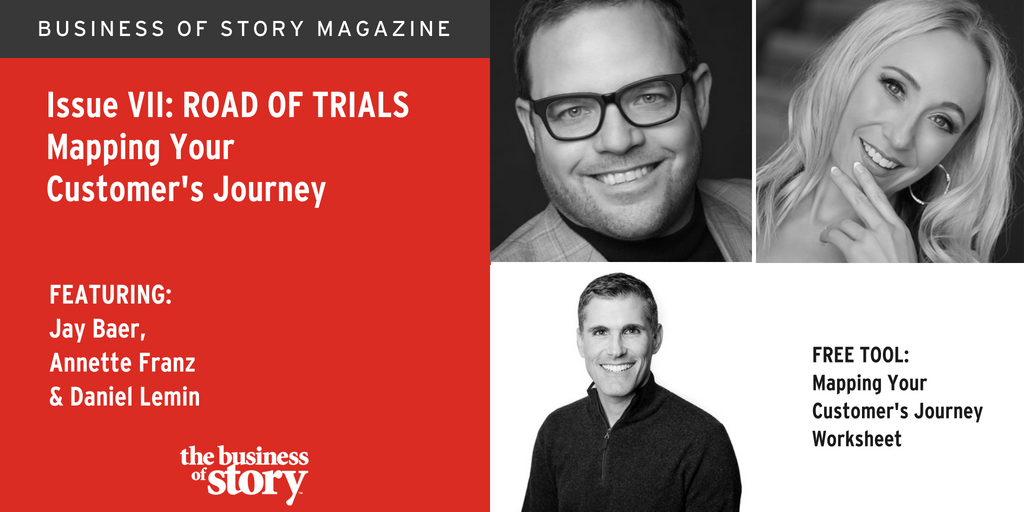What are talk triggers, and how can your brand leverage them to create buzz?
Have you ever eaten at The Cheesecake Factory?
If so, you might immediately find yourself pondering their vast menu of mouth-watering cheesecake flavors, or the amount of food you had leftover for the next day’s lunch after your last meal there. Portions are huge, right?
Indeed, these are common traits that most people associate with the brand. But there’s another, and it might surprise you.
I studied more than 250 customers from The Cheesecake Factory for my latest book about word-of-mouth marketing with Jay Baer, titled Talk Triggers.
We wanted to understand not just what people associate with the brand, but – because it’s a book about word-of-mouth – what they actually go out and talk about.
What stories do they tell?

Admittedly, people do tell stories about the food. Lots of them. And, they also talk about portion sizes.
But would you be surprised to know that, without being prompted, more than a third of customers talk about the size of the menu?
It’s the second most talked-about aspect of the experience at The Cheesecake Factory. And it happens almost as frequently offline – at parties, or in office break rooms – as it does online, in places like Yelp and Google.
We call these talk triggers: strategic, operational differentiators that ignite word of mouth. Talk triggers – like menu size at The Cheesecake Factory – create immense pass along storytelling value that boosts the brand for The Cheesecake Factory.
Talk triggers are a unique storytelling instrument. They are, by design, meant to be simple to understand.
In fact, we realized after studying dozens of companies and their talk triggers that they share some common traits.
Rule #1: First, and most importantly, the talk trigger must be remarkable.
This seems pretty obvious. But what is the definition of the word? According to Merriam-Webster, it’s “worthy of being or likely to be noticed especially as being uncommon or extraordinary.” The Cheesecake Factory’s outsized menu is certainly uncommon. Talk triggers must have an inherent story in them to be durable over the long run.
This is such an interesting baseline for storytelling, as it means the talk trigger must be unique enough to stand the test of time. If you’ve heard a story a hundred times before, does it stand out as unique?
But endure they do. If you’ve ever been to an Arizona State University basketball game you might be familiar with the infamous “Curtain of Distraction.” It might be the strangest thing in college sports, but it’s certainly remarkable.
Positioned in perfect view of the visiting team’s hoop, students at ASU plan elaborate skits that they use to distract players. When the time is right and a free throw is about to be released, the curtain is pulled back to reveal two horses hugging it out. Or, a grandmother breakdancing. It’s all designed to get into the heads of the visiting team.
The Harvard College Sports Analysis Collective studied the “Curtain of Distraction” and found that its impact is as much as 1.41 points per game.
Because of this, the Curtain gets its share of online comments. It even has its own Twitter handle. Its presence, in the court and online, certainly must get in the heads of visiting teams.
The Curtain of Distraction shows the power of remaining remarkable over time.
Rule #2: Talk triggers must be relevant.
![]()
Imagine if The Cheesecake Factory had envisioned building the largest bathrooms in the restaurant industry? While that’s uncommon and perhaps extraordinary, it’s not terribly relevant to the restaurant experience. Another way of looking at this: in the delivery of your customer experience, is the thing you’re hoping customers talk about actually meaningful?
If you’ve ever stayed at a Doubletree by Hilton property, you might remember their talk trigger: a gooey, warm chocolate chip cookie. It’s part of every property’s welcome amenity. It’s a nice show of hospitality, to be certain, but one of the things that makes it so worthy of storytelling is its relevance: so often when you arrive at a hotel, you are hungry. You are also often tired, and a warm cookie is just the thing to make you feel a little bit more at home.
Warm cookies are an operational decision for The Cheesecake Factory that generates substantial pass-along value.
Relevance to the customer experience is a big part of its magic.
Rule #3: Talk triggers must be reasonable.
We sometimes think about word-of-mouth marketing as a shock-and-awe strategy. We have to create something so big, so over-the-top that people won’t be able to help themselves but talk about it. In our research, we discovered that’s just not true. In fact, shock-and-awe can actually create suspicion rather than pass-along value.
Jay Sofer is a locksmith in New York City. To say he’s popular might be a grand understatement. The company he owns, Lockbusters, is the highest-rated locksmith on Yelp in the city. The business of locksmithing resembles a band of jolly pirates. The industry uses cloaked pricing, dirty upselling tricks and preys on the vulnerability of customers who are in a pinch.
Jay runs his business differently, offering transparent pricing and prompt, friendly service. Those certainly set him apart but they’re hardly storytelling material.
There are two aspects to Jay’s business that make him different. First, at the end of every appointment, he offers a complimentary security audit of your home or apartment, and oils all your hinges. That’s the beginning of talkable service, and it’s offered without hesitation. It’s a reasonable gesture and leads to unbelievable praise from his customers:
“Is it weird I almost want to get locked out again so I can call Lockbusters? Yeah, my experience was that great.”
“Makes me almost want to lose my keys so I can [call] Lockbusters again.”
“This guy is amazing.”
Rule #4: A talk trigger must be repeatable.

Available this Fall.
Singling out high priority or top customers for special treatment might make them feel great, and valued, but what does that do to the rest of your customer population? They feel left out. It’s an enemy to word-of-mouth marketing if some portion of your customers cannot access the talk trigger being shared.
Ever eat a burger at Five Guys? You might remember the fries more than the burger. When you get your order, you’ll notice the paper bag is jammed full of fries. Even if you ordered a small fry, you get a bag full of fries. This is something they do for every customer, every time. And people notice, talking about the experience all over social media and most certainly offline, as well.
This is a practice they’ve purpose-built to be a story.
One thing you’ll probably note in all of these examples is a common thread: the talk trigger, and therefore the stories they generate, are simple.
There aren’t terms, conditions, asterisks, details or even much layer. This is part of the magic of encouraging our customers to tell stories on our behalf: they’re simple.
These four basic tenets teach us how to create talk triggers that inspire conversation, but it’s the simplicity in the execution that helps it to endure over time.
You can pre-order your copy of Talk Triggers now at TalkTriggers.com.
This article is an excerpt from Jay Baer and Daniel Lemin’s upcoming book, Talk Triggers.
Learn more about maximizing shareworthy customer experiences in the seventh issue of the Business of Story online magazine.










at 3:03 am
[…] for search engines (and your customers) that your business talks the talk and walks the walk. It gets people talking about your brand, and that’s the heart of digital […]